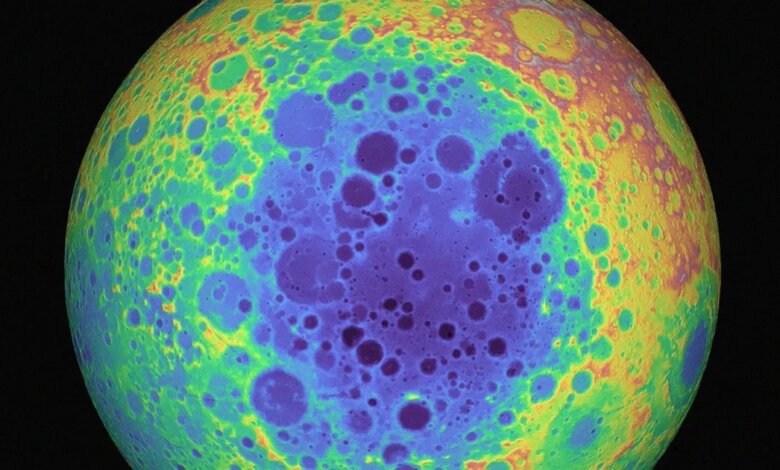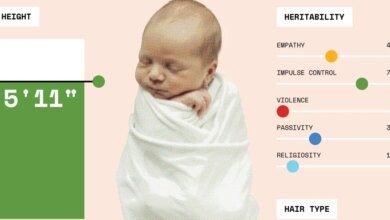There’s Something Really Strange About the Moon’s Largest Crater, Where NASA Astronauts Are Due to Land

Scientists have discovered that we may have been wrong about how the largest crater on the Moon, the South Pole-Aitken Basin (SPA), formed about 4.3 billion years ago.
As detailed in a new paper published in the journal natureThe more than 1,200-mile-long crater appears to have been the result of a rapid southward strike, rather than a direct impact with an asteroid, as previously thought.
The findings could help explain why the far side of the Moon is filled with large craters, while the more explored near side is relatively smooth. It could also have “important implications for upcoming human exploration of the lunar south pole” through NASA’s Artemis program, the researchers wrote.
This is because the space agency’s missions will land on the bottom edge of the basin, which is the best place to study the largest and oldest impact basin on the moon, and where most of the ejecta, which is material from deep within the moon’s interior, should accumulate, study leader and University of Arizona planetary scientist Jeffrey Andrews Hanna explained in a statement.
In other words, the area where we plan to land the first astronauts on the Moon more than half a century ago, just two years from now, could hold more clues about the Moon’s evolution and internal structure than we thought — a happy accident that should make us even more excited about NASA’s long-awaited return.
The team analyzed the shape of the SPA and compared it to other giant impact basins across the solar system. They found that its elongated, teardrop-shaped shape was likely the result of a southward strike, puncturing the moon’s crust and exposing heavier minerals in the process.
Current theories suggest that the Moon was covered in an ocean of magma, as a result of the energy it released when it formed. Heavier minerals sank to form its solid mantle, while lighter minerals floated to its surface to form its crust.
Some “residual” minerals, such as potassium, rare earth elements, and phosphorus – or “KREEP” for short – escaped much of this process and instead became concentrated in the remaining magma ocean and were eventually trapped between the mantle and crust.
“If you’ve ever left a can of soda in the refrigerator, you may have noticed that when the water becomes solid, the high-fructose corn syrup resists freezing all the way through, and instead becomes concentrated in the last bits of liquid,” Andrews-Hannah explained. “We think something similar may have happened on the Moon with KREEP.”
However, the KREEP-rich material accumulated much more on the near side of the Moon, rather than the far side that was volcanically active, a striking asymmetry that remains a major mystery.
The latest findings indicate that “the crust thickened on the far side, and the magma ocean was compressed down to the sides, like toothpaste being squeezed from a tube, until most of it ended up on the near side,” Andrews-Hanna explained.
The incision resulting from the southern impact indicates that the SPA lies at the boundary of KREEP-rich crust and more “normal” crust.
“The last remnants of the lunar magma ocean ended up on the near side, where we see the highest concentrations of radioactive elements,” Andrews-Hanna said. “But earlier, there was a thin, patchy layer of magma ocean beneath parts of the far side, which explains the radioactive ejecta on one side of the SPA impact basin.”
The results highlight how much we still have to learn about our closest celestial neighbor, and how our current knowledge is far from set in stone.
“With Artemis, we will have samples to study here on Earth, and we will know exactly what they are,” Andrews-Hannah said. “Our study shows that these samples may reveal more about the early evolution of the Moon than thought.”
More about moon craters: Scientists say there is more than a trillion dollars worth of platinum waiting to be extracted from moon craters
Don’t miss more hot News like this! AI/" target="_blank" rel="noopener">Click here to discover the latest in AI news!
2025-10-11 14:30:00




